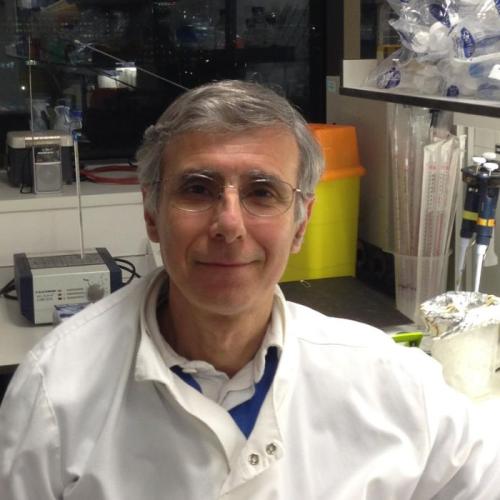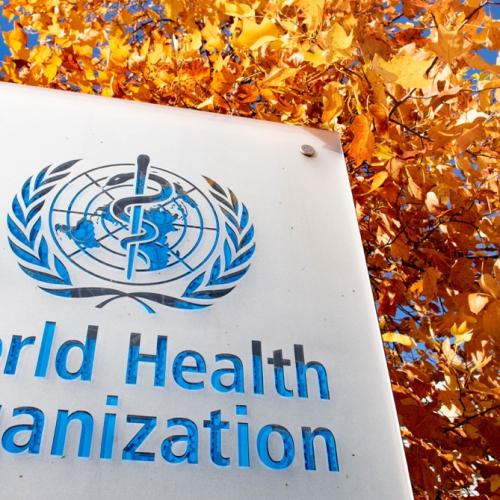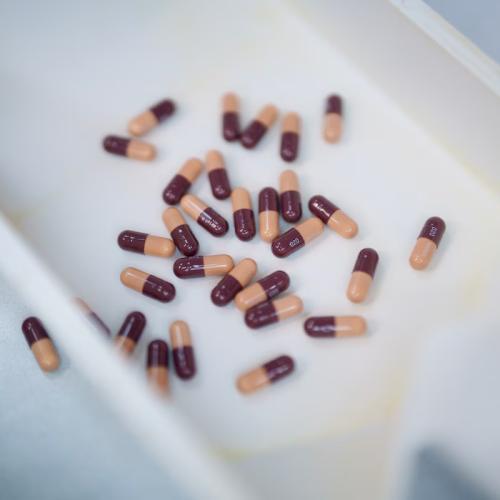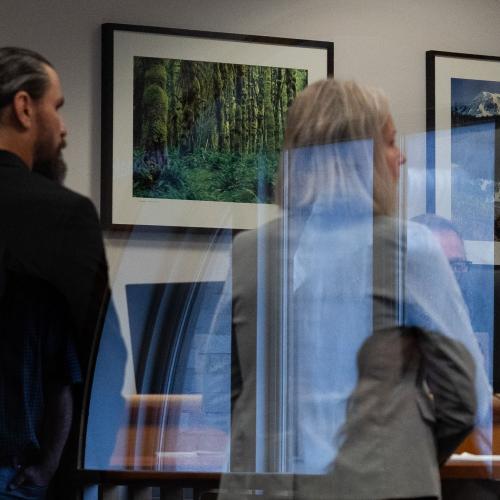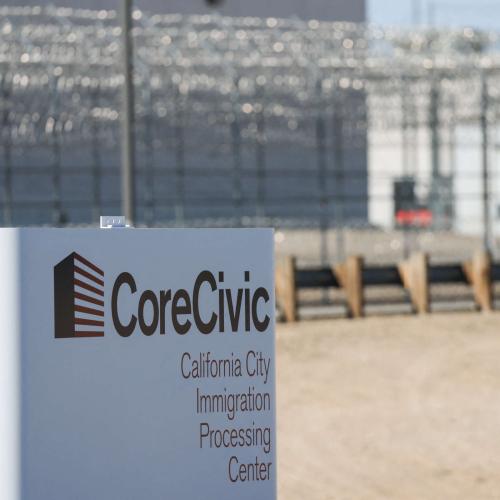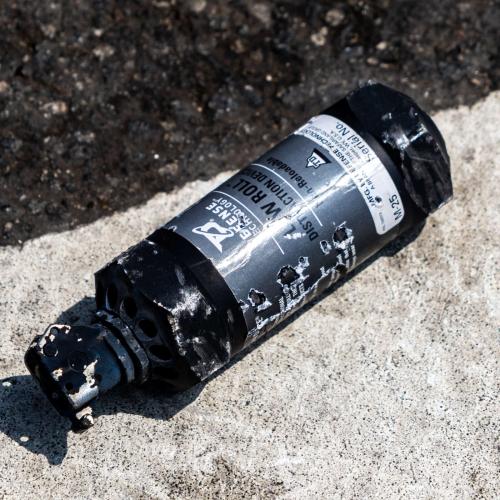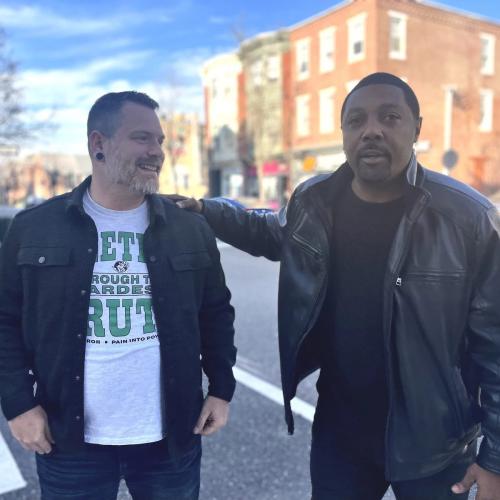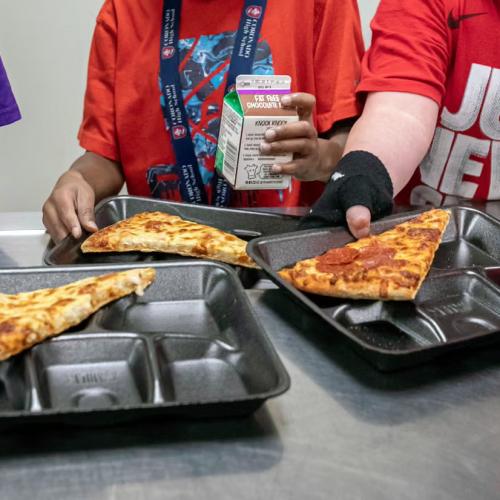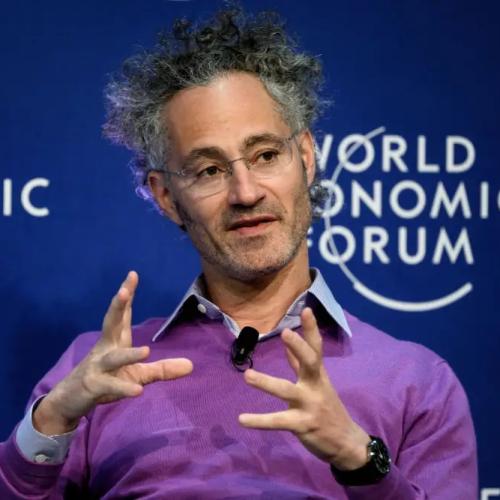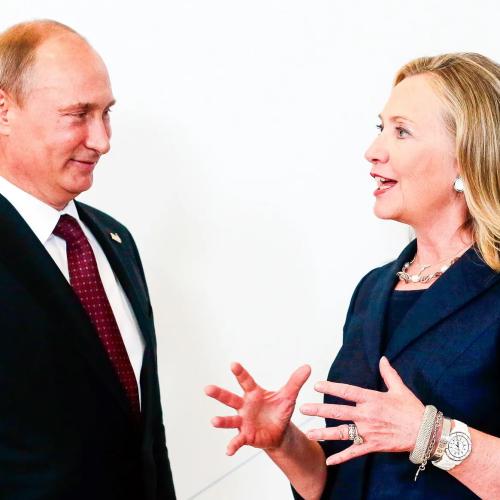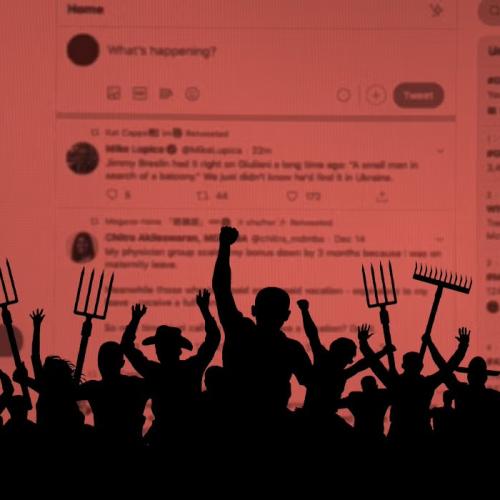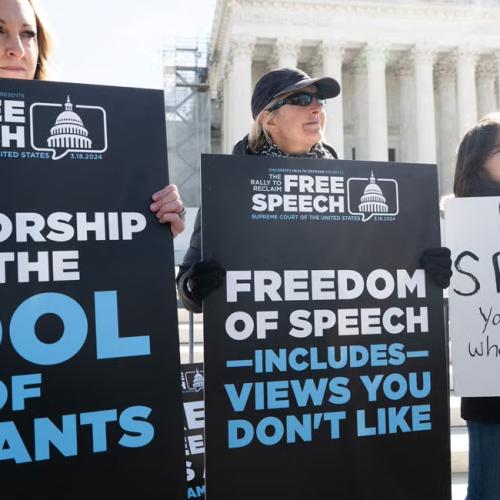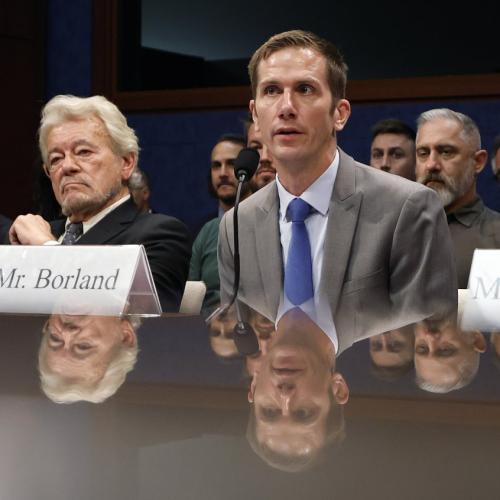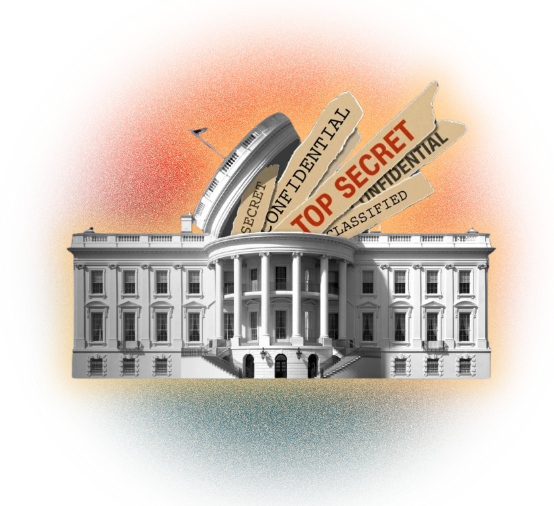Media Articles
Below are key excerpts of revealing news articles from reliable news media sources. If any link fails to function, a paywall blocks full access, or the article is no longer available, try these digital tools.
For further exploration, delve into our comprehensive Information Centers.
It was early 2012 when doctors found a tumor in Kim Franzi’s brain. Franzi underwent a risky two-day brain surgery to remove the mass, which doctors warned could leave her paralyzed or prove fatal. The operation was successful, but more than 13 years later, she still suffers from side effects, including issues with her reflexes, teeth, hearing, and vision. Before discovering the tumor, Franzi used the birth control shot Depo-Provera for more than 15 years. The shot has been used by roughly one in four sexually active women in the United States, bringing in hundreds of millions in profits annually for the pharmaceutical behemoth Pfizer, which manufactures and distributes the drug. But according to more than 1,200 lawsuits, Pfizer has failed to properly warn the public about long-established links between Depo-Provera and meningiomas. That includes a lawsuit submitted on Franzi’s behalf, plus more than 9,500 cases that have yet to be filed. In 2024, a large study of more than 18,000 cases of women undergoing surgery for meningiomas found that “prolonged use of [Depo-Provera] was found to increase the risk of intracranial meningioma.” Specifically, the scientists found that use of Depo-Provera was associated with a more than five-fold heightened risk of developing a meningioma that required surgery, and that risk increased further if patients used Depo-Provera for more than a year. Drug labels for Depo-Provera in the European Union, United Kingdom, New Zealand, Australia, and Canada ... warn about these brain tumors.
Note: Read the full article to learn about how Pfizer omitted six studies that found significant links between patients taking the birth control shot and brain tumors. For more along these lines, read our concise summaries of news articles on health and Big Pharma corruption.
"Delete Day," organized by several Gen Z-led groups, called on young people to excise an addictive app from their lives, starting, for now, with their phones. The event was not heavily promoted on social media, unsurprisingly, and minimally online. Instead, attendees relied on more old-school methods, like word-of-mouth. They decorated the park's entrance with chalk signs like "Delete your apps on the grass" and gave out hand-drawn stickers and pamphlets detailing how to save their data before nixing accounts on apps like Instagram. When they were ready, they could take a seat on the lawn, on picnic blankets, with candles, glow lights, and a living room lamp. The event, which drew about 80 participants, featured a few short speeches from the organizers, the deletion ritual, and a no-phones party. Nick Plante, 25, one of the speakers who organizes events around "attention activism" in the city, [said] that the night's tone was meant to be positive. The idea was to bring people together organically. "We wanted to really, really get in on a couple of people and change their lives very deeply," [said grad student Gabriela] Nguyen. Speakers shared their own struggles of growing up with social media, from being distracted at school to living with looming self-consciousness. "If you're like me, you've canceled on a friend because the pull to just stay at home and chill with all your devices is just too strong," Nguyen said.
Note: Explore more positive stories like this on healing social division.
Emergency rooms, dentist offices, and nursing homes managed by the private equity industry consistently deliver worse health outcomes than other such medical institutions. The difference can mean life or death for patients. A new Harvard Medical School study of more than one million Medicare ER visits found that patient death rates are 13 percent higher in private equity–owned ERs than their counterparts, likely thanks to staffing and salary cuts. On average, private equity–owned hospitals reduce hospital staffing by more than 11 percent and pay ER staffers 18 percent less than non-private equity hospitals. Private equity–backed dental groups have been found to perform medically unnecessary and painful procedures. One firm allegedly extracted healthy teeth from patients to charge them for expensive dental implants, while another performed root canals on the baby teeth of children as young as three. A study of more than 662,000 Medicare hospitalizations in private equity–owned facilities saw 25 percent more hospital-acquired complications, including falls and surgical site infections, compared to other hospitals. Medicare patients in private equity–backed nursing homes suffered an 11 percent higher short-term mortality rate than those in non-private equity–backed facilities between 2004 and 2019, resulting in 22,500 additional deaths. Nursing homes linked to private equity tend to underperform in terms of patient mobility and reported pain levels.
Note: For more along these lines, read our concise summaries of news articles on health and financial system corruption.
The federal investigation into the death of convicted sex-trafficker Jeffrey Epstein was marred by significant lapses, experts told CBS News, including the failure by investigators to interview potential witnesses, properly preserve certain evidence and run basic forensic tests. Nearly two years passed before investigators interviewed the two key corrections officers on duty the night Epstein died. And details pulled from 90 photos of the cell and other evidence collected in the hours after Epstein's death — but before FBI agents arrived to process the scene — appear to show a succession of basic oversights, ranging from an absence of evidence markers to items being moved, experts told CBS News. "The FBI literally has all of the best tools. I mean, spared no expense. They have every tool you can imagine. And they used none of it as far as we can tell," forensic analyst Nick Barreiro said after reviewing the photos. "I do not believe he died by suicide, no," Epstein's co-defendant, Ghislaine Maxwell, said this summer during her interview in August with the Deputy U.S. Attorney General Todd Blanche. Epstein's body was discovered at 6:30 a.m. on Aug. 10, 2019. The first FBI agents arrived at the cell more than seven hours later. When they arrived, photos show they found a disorganized, rifled-through clutter. Epstein's lifeless body had already been removed from the cell, eliminating a critical source of information investigators would need to determine how and when he died.
Note: Read our comprehensive Substack investigation covering the connection between Epstein’s child sex trafficking ring and intelligence agency sexual blackmail operations. For more, read our concise summaries of news articles on Jeffrey Epstein's criminal enterprise.
Mark Zuckerberg is said to have started work on Koolau Ranch, his sprawling 1,400-acre compound on the Hawaiian island of Kauai, as far back as 2014. It is set to include a shelter, complete with its own energy and food supplies, though the carpenters and electricians working on the site were banned from talking about it. Asked last year if he was creating a doomsday bunker, the Facebook founder gave a flat "no". The underground space spanning some 5,000 square feet is, he explained, "just like a little shelter, it's like a basement". Other tech leaders ... appear to have been busy buying up chunks of land with underground spaces, ripe for conversion into multi-million pound luxury bunkers. Reid Hoffman, the co-founder of LinkedIn, has talked about "apocalypse insurance". So, could they really be preparing for war, the effects of climate change, or some other catastrophic event the rest of us have yet to know about? The advancement of artificial intelligence (AI) has only added to that list of potential existential woes. Ilya Sutskever, chief scientist and a co-founder of Open AI, is reported to be one of them. Mr Sutskever was becoming increasingly convinced that computer scientists were on the brink of developing artificial general intelligence (AGI). In a meeting, Mr Sutskever suggested to colleagues that they should dig an underground shelter for the company's top scientists before such a powerful technology was released on the world.
Note: Read how some doomsday preppers are rejecting isolating bunkers in favor of community building and mutual aid. For more along these lines, read our concise summaries of news articles on financial inequality.
There are 34 ingredients in M&Ms, and, according to Mars, the company that produces the candy, at least 30 countries – from Ivory Coast to New Zealand – are involved in supplying them. Each has its own supply chain that transforms the raw materials into ingredients – cocoa into cocoa liquor, cane into sugar, petroleum into blue food dye. The environmental impact of ultra-processed foods – like M&Ms – is less clear and is only now starting to come into focus. One reason they have been so difficult to assess is the very nature of UPFs: these industrially made foods include a huge number of ingredients and processes to put them together, making it nearly impossible to track. Since 1850, agricultural expansion has driven almost 90% of global deforestation, which has been responsible for 30% of global greenhouse gas emissions. Getting an exact measure of the environmental toll of UPFs is nearly impossible, given that, definitionally, UPFs consist of many ingredients and a high volume of opaque processes. Ingredients aren’t just mixed together like one would do to make a stew at home. Instead, these ingredients are chemically modified, some parts stripped away, and flavors, dyes or textures added in – and it’s unclear what the cost of these processes are because so many suppliers and components are involved. Another reason is that all UPFs (again, definitionally) are the creations of food companies that have little incentive to disclose their environmental footprint.
Note: For more along these lines, read our concise summaries of news articles on food system corruption and climate change.
The United States has long used drone strikes to take out people it alleges are terrorists or insurgents. President Donald Trump has taken this tactic to new extremes, boasting about lethal strikes against alleged drug boats in the Caribbean and declaring the U.S. is in a “non-international armed conflict” with narcotics traffickers. Trump appears to be merging the war on terror with the war on drugs. This comes as he’s simultaneously ramping up the use of troops to police inside American cities. The modern drug war began during President Richard Nixon’s administration. In 1994, the journalist Dan Baum tracked down Nixon aide John Ehrlichman and interviewed him. He said, “Look. The Nixon campaign in ’68 and the Nixon White House had two enemies: Black people and the antiwar left. [V]ilify them night after night on the evening news, and we thought if we can associate heroin with Black people in the public mind and marijuana with the hippies this would be perfect.” And [Ehrlichman] said, “Did we know we were lying about the drugs? Of course we did.” This line of thinking drove policies designed to “unleash” law enforcement. The Nixon administration tried to relax wiretapping laws, roll back Miranda rights, and erode Fourth Amendment protections against unconstitutional searches and seizures. And now we’re seeing the Trump administration push even harder to roll back constitutional protections.
Note: Though President Richard Nixon launched the War on Drugs by declaring drugs “public enemy No. 1,” secretly he admitted in a 1973 Oval Office meeting that marijuana was “not particularly dangerous.” The War on Drugs is a trillion dollar failure that has been made worse by every presidential administration since Nixon. Don't miss our in-depth investigation into the dark truths behind the War on Drugs. For more along these lines, read our concise summaries of news articles on military corruption and the War on Drugs.
Eswatini, the landlocked nation formerly known as Swaziland, is Africa’s last remaining absolute monarchy. In May, officials from the US and Eswatini signed a deal that allows the Trump administration to deport people from all over the world to the African nation. A copy of the arrangement I reviewed shows that the United States has agreed to pay Eswatini $5.1 million to take in up to 160 so-called “third-country nationals”—immigrants who came to the US with no ties to the country to which they are being deported. In July, the first five of such men arrived in Eswatini, where they were sent to a maximum-security prison and detained in the country without any clear legal basis. Last weekend, the Trump administration sent 10 more people to the Eswatini prison. None of the 15 men sent to the nation are from Eswatini. But they are now under the authority of its king. The situation is a “legal black hole,” according to Tin Thanh Nguyen, a North Carolina–based attorney who is representing five men from Vietnam and Laos now imprisoned in the African country. As he explained in a statement Monday: “I cannot call [my clients]. I cannot email them. I cannot communicate through local counsel because the Eswatini government blocks all attorney access.” A practice that would have been unthinkable under past administrations is becoming normalized: sending ICE detainees, without due process, to far-flung prisons in countries with notorious human rights records.
Note: For more along these lines, read our concise summaries of news articles on immigration enforcement corruption.
Robert F. Kennedy Jr.’s making animal welfare a component of his Make America Healthy Again mission. The health secretary has asked his agencies to refine high-tech methods of testing chemicals and drugs that don’t involve killing animals. He thinks phasing out animal testing and using the new methods will help figure out what’s causing chronic disease. Last week, the National Institutes of Health announced it would spend $87 million on a new center researching alternatives to animal testing and permit agency-supported researchers to use grant funding to find homes for retired lab animals. Kennedy signed off because he thinks the new methods will enable scientists to more quickly and inexpensively draw conclusions about how chemicals and drugs work. He expects that’ll confirm his belief that chemicals in the environment and in food are making Americans sick and also speed cures for chronic diseases like cancer, heart disease and diabetes. The new center will attempt to develop a standardized alternative to animal testing that relies on tiny, lab-grown 3D tissue models, enlisting help from across the NIH and the Food and Drug Administration, which regulates pharmaceuticals. Harnessing science and technology to protect animals isn’t an obvious Trump agenda item. But the president has a pattern of taking ideas from the left and repackaging them for his base, to great success.
Note: For more along these lines, read our concise summaries of news articles on health and Big Pharma corruption.
When Mount Saint Helens in southwestern Washington erupted on the morning of May 18, 1980, the stratovolcano spewed a plume of debris high into the earth’s atmosphere and spread ash to at least eleven nearby states. But despite the appearance of a mountain-side extinction event, life was already regenerating. Just 10 days after the eruption, the geomorphologist Fredrick Swanson surveyed one of the lahars with colleagues and noticed something intriguing. In the rubble, fine, filament-like threads had attached themselves to some of the smaller pebbles and stones cast out of the volcano’s center. What Swanson was witnessing was the phenomenon of “phoenicoid fungi,” aptly named in a nod to the mythical phoenix rising from the ashes. Fungal organisms such as these are often the first responders to blast zones and wildfire burn areas where the decomposing landscape serves as a smorgasbord for their biological needs. The fungi used for environmental clean-up come in a variety of shapes and sizes. Oyster mushrooms ... can break down petroleum and hydrocarbons, putting them top of the list when it comes to cleaning up deadly oil spills. A 2023 study conducted in Massachusetts, commissioned by MassDOT, found that there could be benefits to integrating mycelium into the state’s pre-existing stormwater management infrastructure to serve as a filtration system to improve water quality.
Note: Explore more positive stories like this in on technology for good and healing the Earth.
Nearly the entire population of El Guayabo, approximately 400 to 500 dirt-poor lime pickers living on communal land in the west Mexican state of Michoacán, fled hastily in mid-July to escape combat between the Jalisco New Generation Cartel, known as CJNG, and the Caballeros Templarios. Every house were shattered by gunfire, roofs were blown open by bombs dropped from internet-bought drones, and everyone walked nervously, scanning the ground for landmines. Scattered everywhere were thousands of dull bronze shell-casings: .50 caliber rounds for sniper rifles and machine guns, 5.56 rounds for AR-15s and similar rifles, and 7.62×39 shells used for AK-47-style rifles. Putting a stop “to every terrorist thug smuggling poisonous drugs into the United States,” as President Donald Trump put it to the United Nations last week, has become his self-proclaimed mission. If the U.S. military does confront the cartels in Mexico, it will find itself facing battle with its own weapons. An investigation by The Intercept traced the bullets that littered the ground in El Guayabo to at least two U.S. firearms manufacturers, one of which operates a massive factory owned by the U.S. military. Experts estimate that around 200,000 military-grade assault weapons and machine guns are trafficked every year from U.S. gunshops to Mexican criminal groups, moving south across the border. Between 2009 and 2011 ... ATF agents in Arizona allowed cartel straw buyers to purchase nearly 2,000 assault weapons.
Note: The US is effectively providing the means for the cartels to wage their dirty war. Read more about how the US arms Mexican drug cartels. Also, don't miss our in-depth investigation into the dark truths behind the War on Drugs including the long history of the US government arming and financing drug cartels for years. For more along these lines, read our concise summaries of news articles on the War on Drugs.
The very week the United States’ Defense Security Cooperation Agency notified Congress of a $346 million arms sale to Nigeria, the U.S. State Department also released its 2024 Country report on human rights practices in the West African country. Security forces of Nigeria, Washington’s most significant ally in Sub-Saharan Africa, habitually operate with impunity and without due regard for human rights protection — a key condition for receiving U.S. security cooperation. For example, the report spotlighted the following human rights abuses as ongoing concerns: “arbitrary and unlawful killings; disappearances; or cruel, inhuman, or degrading treatment or punishment; arbitrary arrest or detention; serious abuses in a conflict.” It also claimed that “military operations against ISIS-WA, Boko Haram, and criminal organization targets” often resulted in civilian deaths. Other findings include the use of “excessive force,” “sexual violence and other forms of abuse” by the military. Since the 1950s, the U.S. has been the world’s leading arms-exporting nation accounting between 2019 and 2023 for 42 percent of all global arms exports. Several laws exist ostensibly to regulate and ensure that U.S. security assistance is provided to allies without undermining America’s core values. However, not once have any of the relevant legal provisions conditioning arms sales on respect for human rights and civilian harm concerns been enforced.
Note: Learn about the loophole that allows US to fund child soldiers in countries like Nigeria. For more, read our concise summaries of news articles on military corruption.
Larry Sanger appeared on Tucker Carlson's podcast to claim Wikipedia had lost its way and began censoring accounts which held right-wing or conservative views. 'There is a whole army of administrators - hundreds of them - who are constantly blocking people that they have ideological disagreements with,' he said. Sometime between 2006 and 2007, he began asking questions about intelligence agencies interfering with the entries. 'Virgil Griffith did Master’s research,' he revealed, speaking of the American programmer who served a five year prison sentence for North Korea with evading sanctions. 'He came up with a tool called Wiki Scanner that enabled people to look up the IP addresses of people who had done edits and like, who had edited which articles. And so they were able to find a whole bunch of edits coming from Langley.' Langley is often a term used to describe the CIA, the unincorporated community of Langley in Virginia, where the headquarters is based. 'A large part of the remit of intelligence today is to manipulate public opinion in various ways,' Sanger said. 'Wikipedia is like just a gold mine for the intelligence agencies of the world because it’s like a one stop shop. You can just like type in the things that you want people to believe.' Carlson had claimed Wikipedia has become 'a weapon of ideological, theological war, used to destroy its enemies.' Sanger said he first recognized and began to describe Wikipedia as 'propoganda' in 2020.
Note: Read more about how the CIA, FBI, and the Pentagon secretly edited entries in Wikipedia, including removing references to CIA illegal rendition and torture, downplaying US involvement in Iraqi civilian deaths, and rewriting the definition of “terrorism” to expand its political use. For more, read our concise summaries of news articles on censorship and intelligence agency corruption.
Each planting season, Claudia Bashian-Victoroff ventures out into Bole Woods. Laced throughout, weaving an intricate, microscopic web, are the mycorrhizal fungi she’s after — fungi that have spent 400 million years learning to live in symbiosis with plants, including the trees throughout Bole Woods and at least 80 percent of all species on the planet. Bashian-Victoroff doesn’t need much soil. A single spoonful can contain miles of fungal hyphae and filaments, engaged in an ancient evolutionary exchange with the trees to which they’ve bonded. The fungi gather up water and nutrients, and deliver them to the trees. In return, they receive carbohydrates developed through photosynthesis, which they fix into the soil as they grow. It’s a prosperous cycle, and Bashian-Victoroff is among a growing global community of researchers and conservationists taking advantage of this relationship to restore forests and other degraded ecosystems. Their goal: Promote the health of the soil beneath our feet and the plants it supports, sequester carbon and make agriculture more sustainable. Mycorrhizal fungi can be an important part of a broader suite of climate solutions, says Anne Polyakov, a fungal conservation and restoration scientist with the Society for the Protection of Underground Networks, or SPUN, which recently used machine learning to map the planet’s mycorrhizal networks in an effort to promote conservation.
Note: Explore more positive stories like this in on technology for good and healing the Earth.
Wikipedia was founded on an idealistic mission to provide all the world’s information for free—and to do so democratically. But, as we’ve reported before in these pages, the site has been hijacked by ideologues. One of the site’s founders, Larry Sanger ... has been a vocal critic of what the site he built has become. At present, Wikipedians offer their own well-managed, curated perspective on global opinion. But any opinion outside of that perspective is an unwelcome “minority or fringe view”—as global opinion usually is. They will be silenced, should they have the audacity to speak for themselves. To better record the chorus of worldwide voices, Wikipedia should permit multiple, competing articles per topic, written within explicitly declared frameworks, each aiming at neutrality within its own framework. Wikipedia’s editorial work is self-managed by a group of volunteers. But things are not as democratic as they seem. There are 62 accounts with the most authority, who have the ability to install and remove administrators or check the IP addresses of problem users. But only 14.5 percent of these accounts reveal a full, real name. The vast majority of Wikipedia’s top editorial leadership is anonymous. These accounts are the people who are ultimately responsible for Wikipedia’s content. There is no legitimate, well-established way to ratify significant reforms. There have been few, if any, significant changes since 2006. Wikipedia needs an editorial legislature chosen by fair elections.
Note: For more along these lines, read our concise summaries of news articles on censorship and media manipulation.
The European Union expects Georgia to change radically to accommodate the EU. The Georgian government expects the EU to change radically to accommodate Georgia. What brought matters to a head between Georgia and the EU was the Russian invasion of Ukraine in 2022. The Georgian government condemned the invasion, sent humanitarian aid to Ukraine and imposed certain sanctions on Russia. However, it tried to block Georgian volunteers going to Ukraine to fight and rejected Western pressure to send military aid and to impose the full range of EU sanctions, leading to fresh accusations of being “pro-Russian.” On this, President Kavelashvili pushed back very strongly. He accused the West of trying to provoke a new war with Russia that would be catastrophic for Georgia. Georgia has a government that represents the interests of our people…the same media outlets that accuse us of being under Russian influence tell the same lie about President Trump,” [he said]. President Kavelashvili accused the U.S. “deep state” and organizations like USAID, the National Endowment for Democracy, and the European Parliament of mobilizing the Georgian opposition to this end; “but despite all this pressure, we stood and continue to stand as guardians of Georgian national interest and of Georgian economic growth” — the latter comment a veiled reference to the very important economic links between Georgia and Russia.
Note: Our Substack, Working Together To End the War On Peace in Ukraine, challenges the dominant narrative on the Ukraine war, arguing that US and NATO policies, wartime corruption, media censorship, and corporate profiteering have fueled the conflict while blocking genuine peace efforts. Learn more about how war is a tool for hidden agendas in our comprehensive Military-Intelligence Corruption Information Center. For more, read our concise summaries of news articles on war.
It wouldn’t be wrong to say Sam Shoemaker crossed the ocean on a mushroom. This August, the Californian artist launched his 14-foot kayak off Catalina Island and paddled for 12 hours across the 26.5-mile Catalina Channel to San Pedro. The brownish-white boat itself [was] “a boat made entirely from a single mushroom growing outside my studio,” Shoemaker explains — the world’s largest mushroom boat. He built it from wild Ganoderma polypore collected near his LA studio, propagated in a hemp-and-sawdust substrate for about four weeks, molded into kayak form and dried until it became “a strong, hydrophobic and inert, cork-like material.” Mycelium, the interconnected root network of a fungus such as Ganoderma polypore, can grow to hundreds of acres. The boat was sealed with locally sourced beeswax, using no synthetic materials. Shoemaker’s multiyear project wasn’t commercial — he is simply interested in demonstrating mushrooms’ potential. His invention is part of AquaFung, a term coined — and a movement inspired — by artist Phil Ross that hopes to one day replace Styrofoam and other materials that go into water with fungi, as part of the nonprofit Open Fung. In their quest, Shoemaker and Ross are members of a sprouting global community of artists, engineers, high-end designers and environmentalists, intent on producing sustainable inventions from mushrooms. For Ross, mycelium is not just a material but a mystery and companion.
Note: Explore more positive stories like this in on technology for good and healing the Earth.
The urban tree canopy in Denver is one of the sparsest in the country. In 2020, when Linda Appel Lipsius became executive director of the decades-old Denver Urban Gardens (DUG) network, which oversees more than 200 community vegetable gardens throughout six metro Denver counties, she wanted to continue increasing community access to fresh food—a longtime goal of the garden program. But she had another aim, too: increasing the city’s tree coverage. Appel Lipsius decided to build a system of food forests throughout the Denver area. These dense, layered plantings incorporate fruit-bearing trees with other perennials to mimic natural forests. Now, DUG oversees 26 food forests, with 600 or so fruit and nut trees and 600 berry bushes. While urban trees are recognized for their multiple benefits, including cooling and carbon drawdown, “there are not a lot of players in Denver, or even in most cities around the country, who are focused on food trees,” Appel Lipsius said. “We were able to step into this space to help build and bolster the canopy while adding food-producing perennials.” Neighbors are welcome to enter and harvest a wide assortment of fruits, nuts, and berries. Beyond providing fresh food in neighborhoods that need it most, these agroforests reduce the urban heat island effect, create pollinator habitat, and combat pollution and climate change by absorbing and filtering harmful gases.
Note: Explore more positive stories like this on healing the Earth.
Having a sense of purpose in life may help people live longer. Now, new research from the University of California in Davis shows that having a sense of purpose in life may have another benefit as people age: reducing the risk of dementia. The new study ... found that people who reported a higher sense of purpose in life were about 28% less likely to develop cognitive impairment—including mild cognitive impairment and dementia. The protective effect of having a purpose was seen across racial and ethnic groups. It also remained significant even after accounting for education, depression, and the APOE4 gene, which is a known risk factor for Alzheimer’s disease. “Our findings show that having a sense of purpose helps the brain stay resilient with age,” said Aliza Wingo, senior author. “Even for people with a genetic risk for Alzheimer’s disease, sense of purpose was linked to a later onset and lower likelihood of developing dementia.” The findings support the idea that psychological well-being plays a key role in healthy aging, said Thomas Wingo, a co-author of the study. Wingo hopes future studies will explore whether purpose-building interventions can help prevent dementia. “What’s exciting about this study is that people may be able to ‘think’ themselves into better health. Purpose in life is something we can nurture,” he said. “It’s never too early — or too late — to start thinking about what gives your life meaning.”
Note: Explore more positive stories like this on amazing seniors and healing our bodies.
“Dance is a language of the body,” says Julia F. Christensen, a neuroscientist at the Max Planck Institute for Empirical Aesthetics and author of Dancing is the Best Medicine. “Our brain understands gestures that we may do as we dance like an expressive language.” For centuries, communities have turned to dance not only for celebration but for ritual and healing. Long before scientists tracked brain waves or measured neurotransmitters, dancers had an intuitive understanding of the power of moving together. Now, the research is starting to catch up. A 2024 meta-analysis published in The BMJ reviewed 218 clinical trials and found that dance reduced symptoms of depression more than walking, yoga, strength training, and even standard antidepressants. While only 15 of the studies focused specifically on dance, the results were enough to grab the attention of researchers. Our brains are wired for rhythm—and dancing engages our entire nervous system. Some neuroscientists describe this full-body stimulation as a neurochemical symphony. Anticipating a melody can trigger the release of dopamine. Physical movement boosts endorphins. Dancing with others increases oxytocin. Studies have shown that this trifecta can enhance mood, increase social bonding, and reduce stress. Dance offers a unique way to reconnect with oneself. It can activate emotional, cognitive, and sensory pathways, reawakening a sense of connection within and beyond the self.
Note: Explore more positive stories like this on the power of art and healing our bodies.
Important Note: Explore our full index to key excerpts of revealing major media news articles on several dozen engaging topics. And don't miss amazing excerpts from 20 of the most revealing news articles ever published.













